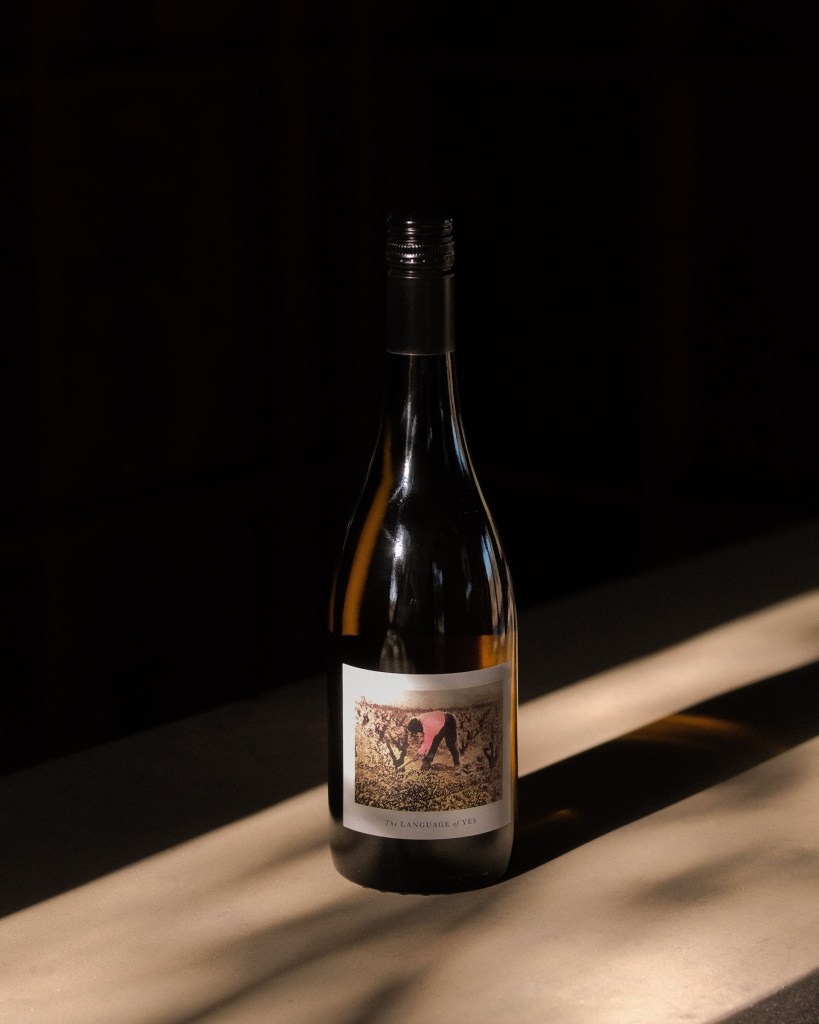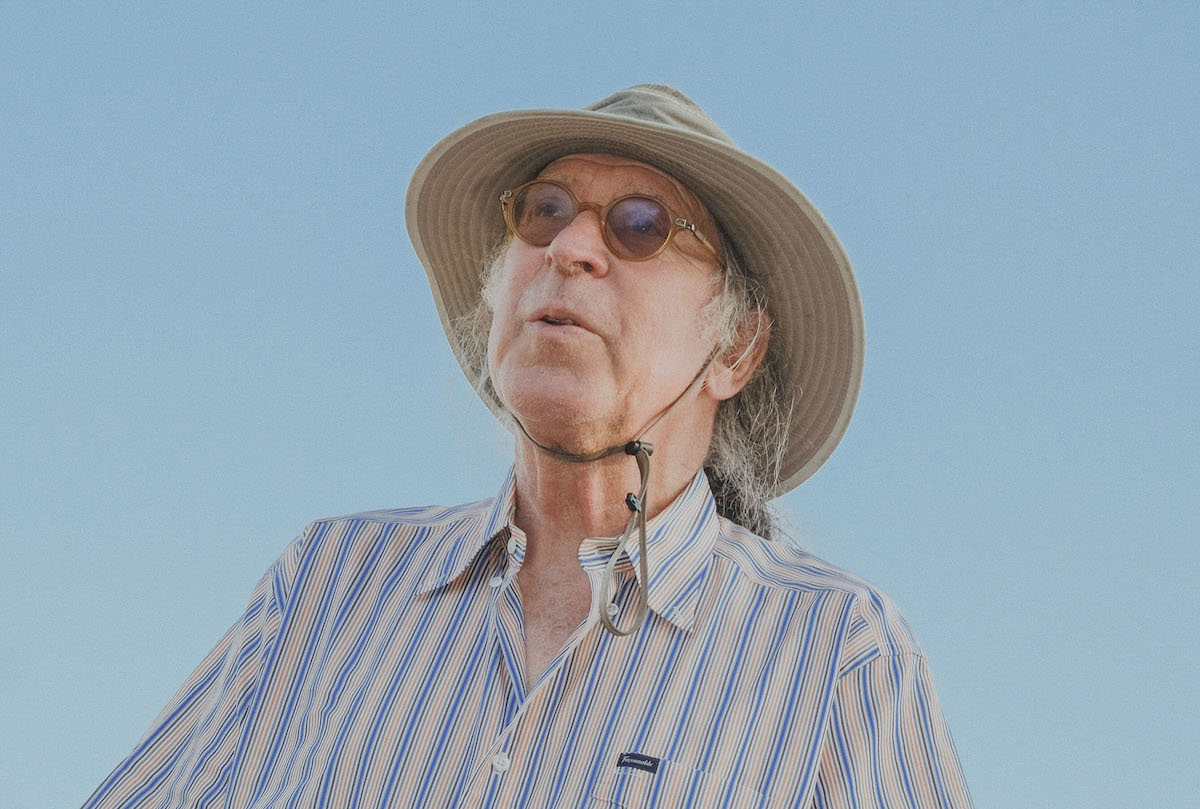There are few winemakers more important to the Central Coast wine industry than Randall Grahm, who founded his Bonny Doon Vineyard to pursue pinot noir in the Santa Cruz Mountains 40 years ago. Within a few years, he’d shifted course to Rhône varieties such as syrah, grenache, and roussanne, launching the label Le Cigare Volant three years later to showcase blends of these grapes.
That name is a nod to the hilarious 1954 law banning UFOs from landing in the vineyards of France’s Châteauneuf-du-Pape region — home to the world’s best-known grenache-led blends — and is evidence of the colorfully creative character that Grahm would embrace for the rest of his life. He was splashed across the cover of Wine Spectator in 1989 as the “The Rhône Ranger,” and went on to make dozens of different wines from countless undiscovered vineyards across California, mentoring an entire generation of vintners along the way.

Though I’d known his wines for years, I didn’t meet Grahm in person until 2015, when he took me around his Popelouchum Vineyard outside of San Juan Bautista. Perhaps his most ambitious project ever, and one that won’t likely bear the right fruit until long after he’s gone, the vineyard is Grahm’s attempt to develop California’s own grape by planting numerous varieties and rootstocks to trigger hybrids that will work for the state’s climate.
But Grahm was never known as the best salesman or a financial genius, and he frequently ran into money troubles, which led to the sale of the majority of Bonny Doon in early 2020. And that’s how I found myself eating lunch with Grahm last week in King City, to learn about how this iconoclastic, independent-minded wine legend is now partnering with the all-powerful Gallo family on a new project called The Language of Yes. Given that he’s sourcing grapes from Gallo’s Rancho Real Vineyard — also known as Murmur, which lies alongside 101 just south of Orcutt — Grahm is now a Santa Barbara County story as well.
“In a slightly tangential and somewhat unexpected note, you may (or might not) have heard of my recent joint venture with E & J Gallo Wine Company, a small outfit out of Modesto, CA,” wrote Grahm in an August 11 email to fans, his verbiage as subversively humorous as ever. “Yes, I know, it’s a bit of a Bambi Meets Godzilla scenario, but so far, so good, and there are some really astonishing wines arising therefrom and it has been a great experience.”
Sign up to get Matt Kettmann’s Full Belly Files, which serves up multiple courses of food & drink coverage every Friday, going off-menu from our regularly published content to deliver tasty nuggets of restaurant, recipe, and refreshment wisdom to your inbox
We decided to meet at the Cork & Plough, where I found Grahm and Gallo’s marketing guru Lon Gallagher with a rosé already popped. A very light (some may just call it “white”) rosé of the pale-red Provencal grape tibouren, with 25 percent of the Rhône grape cinsault, this was the first wine to be released under The Language of Yes banner. It sold out in just over an hour when the Grahm-Gallo partnership was announced.
The partnership emerged out of Grahm’s Bonny Doon sale, when he got a call from Joe C. Gallo about starting a joint venture that combined Grahm’s mind with the Gallo family’s sales and logistical force. “If we wanted to be active in the Rhône space,” explained Gallagher of what motivated Gallo, which makes a lot of wines but not many Rhônes like syrah and grenache, “who else do we talk to?”

For Grahm, who was told that he could do his wacky things and let Gallo handle the rest, “This was quite interesting on a number of levels.” (The Bambi versus Godzilla joke came up again a couple of times — Graham showed us this hilarious short film — but Gallagher asked, “Who is Bambi and who is Godzilla?”)
So with Gallo’s backing, Grahm grafted the tibouren onto Creston Ridge Vineyard in Paso Robles and sourced syrah and grenache for red wines from Rancho Real. The tibouren is fantastic, tons of texture and restrained fruit flavors, while the syrah and grenache — which will be released in October — are also unique expressions, in part because Grahm dried the grapes outside for a couple of days before pressing them. In addition to the three wines, they plan to add perhaps another wine each vintage, including a possible Amarone-style cinsault co-fermented with syrah, if the timing works out this harvest.
As our conversation veered into a gaggle of Old World grapes that I’d never heard of, Grahm grew a bit more introspective about this new project. “The Bonny Doon wines were very stylized,” he explained of how he actively made those in the cellar to be a certain way. “These wines are more soulful and thoughtful, more vineyard-derived than conceptually derived.”
As to the name, Grahm explained his deep dive into finding words from a Provençal dialect that extends from the Pyrenees to Piedmont before settling on The Language of Yes. He explained, “The name seems very welcoming for these times in which we live.”
A version of this story was published in the Full Belly Files newsletter last Friday. Sign up for that free weekly service here.
Support the Santa Barbara Independent through a long-term or a single contribution.





You must be logged in to post a comment.